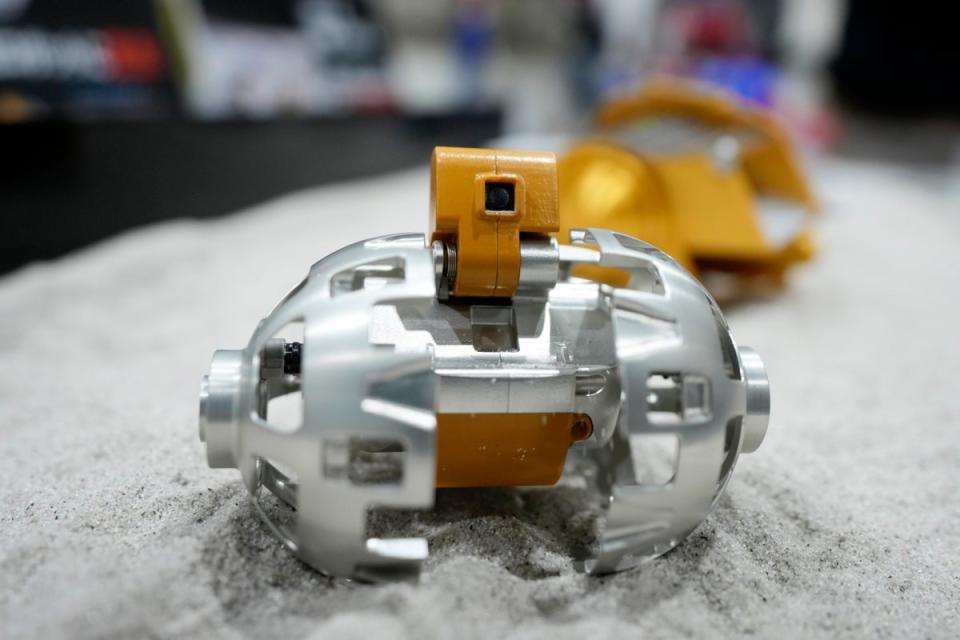Japanese lander: ‘Moon sniper’ spacecraft lands on lunar surface – but its fate remains mysterious
A Japanese “Moon sniper” spacecraft appears to have landed on the Moon.
But the country’s space agency could not immediately confirm that it had done so safely.
A livestream of the landing indicated that the Slim spacecraft had landed on the lunar surface. But it also appeared to show that it had dropped on its side, which could stop the lander from working.
JAXA, the Japanese space agency, said that it was “checking the status” of the spacecraft and then ended its live coverage of the landing without confirming its fate.

Slim guided itself down to land in an autonomous 20-minute descent from 15 km above the moon’s surface. Live coverage showed information from the lander that indicated that landing was going as planned.
Dubbed the “moon sniper”, SLIM attempts to land within 100 metres (328 feet) of its target, versus the conventional accuracy of several kilometres.
If Japan is able to successfully land on the surface, it will become only the fifth nation to do so. Only the former Soviet Union, the United States, China and India have softly landed on the Moon, and no private company has ever done so.
Japan is increasingly looking to play a bigger role in space, partnering with ally the United States to counter China. Japan is also home to several private-sector space startups and the JAXA aims to send an astronaut to the moon as part of NASA’s Artemis program in the next few years.
But the Japanese space agency has recently faced multiple setbacks in rocket development, including the launch failure in March of its new flagship rocket H3 that was meant to match cost-competitiveness against commercial rocket providers like SpaceX.

The failure caused widespread delays in Japan‘s space missions, including SLIM and a joint lunar exploration with India, which in August made a historic touchdown on the moon’s south pole with its Chandrayaan-3 probe.
JAXA has twice landed on small asteroids, but unlike with an asteroid landing, the moon’s gravity means the lander cannot pull up for another try, its scientists said. Three lunar missions by Japanese startup ispace, Russia’s space agency and American company Astrobotic have failed in the past year.
Slim’s successful touchdown and demonstration of the precision landing “will help Japan to keep its technology advanced at a very high level in the world,” Ritsumeikan University professor Kazuto Saiki has said before the touchdown attempt. Saiki developed SLIM’s near-infrared camera that will analyse moon rocks after the touchdown.
The 2.4m by 1.7m by 2.7m vehicle includes two main engines with 12 thrusters, surrounded by solar cells, antennas, radar and cameras. Keeping it lightweight was another objective of the project, as Japan aims to carry out more frequent missions in the future by reducing launch costs. SLIM weighs 700 kg (1,540 lb) at launch, less than half of India’s Chandrayaan-3.
As the probe descends onto the surface, it recognises where it is flying by matching its camera’s images with existing satellite photos of the moon. This “vision-based navigation” enables a precise touchdown, JAXA says.
Shock absorbers make contact with the lunar surface in what JAXA calls new “two-step landing” method - the rear parts touch the ground first, then the entire body gently collapses forward and stabilizes.
The precision landing “won’t be a game changer”, but the cost-reduction effects of it and the lightweight probe manufacturing might open up moonshots to space organisations worldwide, said Bleddyn Bowen, a University of Leicester associate professor specialising in space policy.
“Not as big as the United States or the Soviet Union of old or China today in terms of scale, but in terms of capability and niche advanced technologies, Japan has always been there.”
On landing, SLIM also deploys two mini-probes - a hopping vehicle as big as a microwave oven and a baseball-sized wheeled rover - that will take pictures of the spacecraft. Tech giant Sony Group, toymaker Tomy and several Japanese universities jointly developed the robots.
SLIM was launched on Japan’s flagship H-IIA rocket in September and has taken a fuel-efficient four-month journey to the moon.
Additional reporting by agencies

